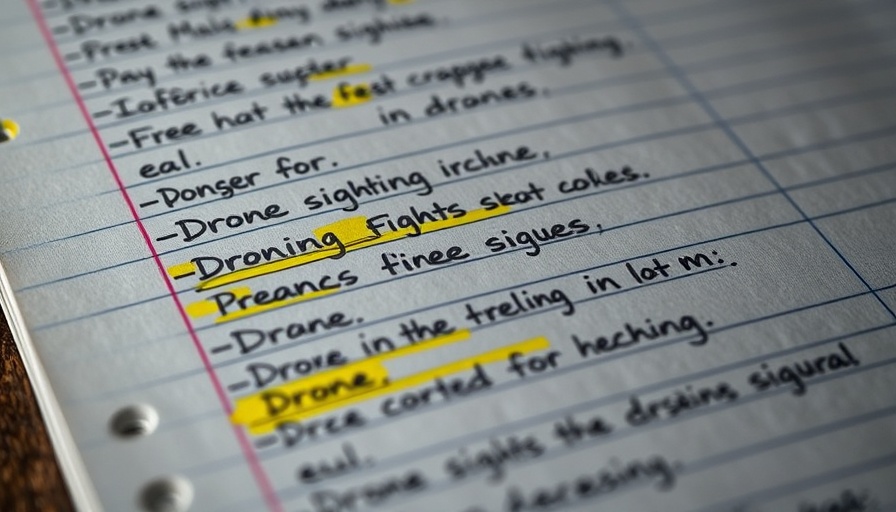
The Unseen Threats: Understanding Drone Swarms in U.S. Airspace
Across the United States, drones have increasingly become a fixture in both civilian and military airspace, leading to significant national security concerns. The challenge of stopping drone swarms—groups of drones that fly together—raises critical questions about surveillance, safety, and military preparedness. Even as drone technology evolves rapidly, the military faces immense difficulties in countering these threats effectively.
Historical Context: The Rise of Drone Intrusions
Instances of drone swarms in the U.S. date back several years, with a notable incident involving Navy warships being monitored by drone fleets off California's coast in 2019. While the Pentagon once speculated that these occurrences might involve unidentified aerial phenomena, it was later established that they were indeed drones. Furthermore, military and critical infrastructure installations have faced increasing drone-related incursions, such as the mysterious drone sightings over Langley Air Force Base in December 2023.
Risk Factors: Military Vulnerabilities Exposed
Officials like retired General Glen VanHerck have underscored the inadequacy of current defense mechanisms against drone invasions. This is particularly alarming given that the U.S. military has struggled to adapt its antiquated surveillance technologies—designed during the Cold War—to detect and counter drones operating at lower altitudes. The presence of drone swarms over sensitive locations poses potential threats, from surveillance and intelligence-gathering by foreign entities to physical attacks, emphasizing the pressing need for enhanced military protocols.
Current Events: Legislative Challenges and Response
Despite the clear risks, coordination between various U.S. agencies to develop a cohesive drone defense strategy has been sluggish. As evidenced by the recent testimonies to the Senate Armed Services Committee, military leaders express an urgent need for more authority and innovative technologies to counter these low-altitude threats. New radar systems and anti-drone technologies are on the horizon, aiming to improve response times against swarm attacks.
The Role of Technology: Adapting to New Threat Realities
The past few years have seen advancements in drone defense technology, yet the military acknowledges that their capabilities need to catch up quickly. New measures are being enacted to install sensitive radar systems at military bases, effectively allowing for timely detection and tracking of potential drone threats. As Gen. Gregory Guillot of NORAD stated, moving beyond outdated assumptions about U.S. safety is vital in reshaping national defense strategies.
Public Perception: Neighborly Threat or Existential Risk?
The varying assessments of drone activities highlight a broader societal question: how should the public interpret this evolving threat? While some officials may downplay incidents as innocent hobbies, others indicate a conceivable connection to foreign intelligence activities. National discourse surrounding the issue points to an urgent need for public awareness about the potential implications of unregulated drone usage, from privacy concerns to security hazards.
What You Can Do: Monitoring Drone Activity
As individuals interested in national security, staying informed and cautious about drone activity in your vicinity can aid in addressing this growing concern. Understanding the local regulations concerning drone operations and reporting unusual sightings can contribute tangibly to community safety. Engaging with technological advancements aimed at monitoring or defending against drone intrusions is also crucial.
Conclusion: Preparing for Tomorrow's Threats
As we navigate through an era increasingly dominated by sophisticated technology, understanding and responding to drone swarms will play a significant role in national security. It's time for policymakers and military leaders to act decisively in fortifying protocols and enhancing interception technologies. By fostering a cohesive approach that adapts to the realities of drone warfare, the U.S. can better protect its infrastructure and citizens.
Stay engaged with developments in drone technology and national security, as these issues continue to evolve. Understanding them is vital for safeguarding our communities and responding effectively to threats as they arise.
 Add Element
Add Element  Add Row
Add Row 



 Add Row
Add Row  Add
Add 


Write A Comment